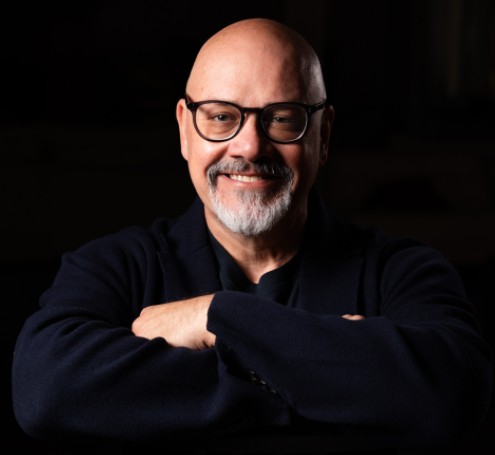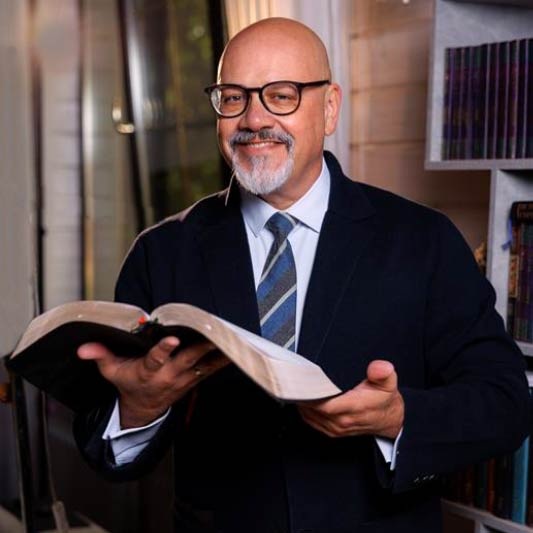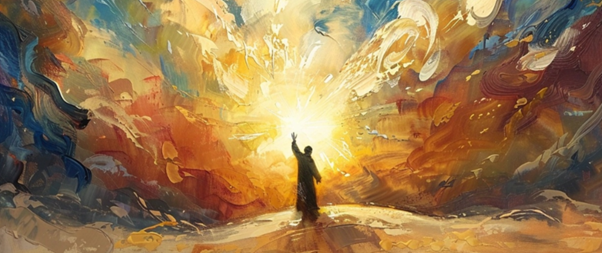
By Dr. Eli Lizorkin-Eyzenberg.
Thank you to my friends and family for your support and prayers!
This article is part II article with the same title and also it is a part of the chapter in a larger book The Jewish Roots of Mary: A Different Look at the Iconic Hebrew Woman.
Mary as New Rachel
So far, we have seen that the ancient Jewish idea of the “merits of the fathers” includes not only the fathers but also the mothers of the faith. We have seen how, in Judaism, a particular woman has earned a very special place of becoming the chief intercessor for the people of Israel. Her name is Rachel, and she has earned that reputation because among all women and certainly among all the foremothers of the nation of Israel, the suffering and tragedy that she bore was unique.
Moreover, the key biblical text around which all speculation and religious imagination spirals is Jeremiah 31:15, where the prophet declares that even though Rachel has died, she somehow continues to intercede for the exiled children of Israel in such a powerful way that her voice is heard by Israel’s God loud and clear.
The Gospel of Matthew, in its very beginning, tells the story of Jesus’ birth and early survival. This is rather a famous story told and retold so many times that there is no reason to repeat it here. Thus, I will pick up my discussion from a particular point in this story: when Herod learns there is a good chance that in a little town known as Bethlehem, someone is born who one day may be Israel’s king (Matt 2:1-2). Upon hearing this, Herod acts decisively and ruthlessly.
One key point to understand is that Bethlehem is not only very close to Jerusalem, but it has been rumored among some to be the future birthplace of Christ, Israel’s King. Had the birthplace of Jesus been somewhere other than Bethlehem, or perhaps at least not in Judea, Herod might not have been so worried. The name Bethlehem raises a red flag in Herod’s mind, and his suspicion is confirmed by spiritual advisers, who have the wisdom he sought on this matter (Matt 2:4-6).
Because the magi – a caste of highly educated men from some distant Eastern country who specialized in astronomy, astrology, and natural science – claim that they have seen his star, Herod becomes paranoid, as would anyone who is desperate to hold on to power. He understands that anything the people perceive to be of heavenly origin will not survive any level of government control.
Herod does not believe for a second that Christ, the long-awaited King of Israel, had just been born in Bethlehem. Yet he knows that if the story of the Magi from the East gets out, with its perfect makings of a legend, this will fuel Messianic speculation, which could put either him or his appointee/descendant out of royal business. Herod authorizes a mass murder of all children under two years old, just to be sure, born in the vicinity of Bethlehem to put his fears to rest. We read in Matthew:
Then what had been spoken through Jeremiah the prophet was fulfilled: A voice was heard in Ramah, weeping and great mourning. Rachel weeping for her children. And she refused to be comforted because they were no more. (Matt 2:17-18)
The angel of the Lord appears to Joseph and instructs him to evacuate Mary and Jesus from the province of Judea and take them all the way to the land of Egypt. This is the first time that Rachel’s intersession from Jer. 31:15 is somehow connected with what is directly happening to Mary in Matthew 2.
Brant Pitre brilliantly combines his Catholic commitments together with research in Jewish studies. He has passionately and capably popularized what people before him have already said – Mary is the New Testament equivalent of the Old Testament Rachel. In his book Jesus and the Jewish Roots of Mary, Brant Pitre suggests three connections between Mary and Rachel:
First, the massacre of the infants happens in the vicinity of Rachel’s tomb. Mary gives birth practically next to Rachel’s tomb (Bethlehem). Second, Rachel’s intercession is explicitly quoted in Matthew 2:17-18. So, the author of the Gospel of Matthew clearly thinks that there is a connection. Third, both Rachel and Mary suffer because of the identity and the purpose of God in the lives of their sons Joseph and Jesus, respectively. Brant Pitre quotes David Flusser, one of the late pioneers of the Jewish Jesus research from the Hebrew University of Jerusalem:
“In Matthew, Rachel is a symbolic figure for the suffering mother, in this case, the suffering Jewish mother. And Rachel’s pain for the dead children is also symbolic for the suffering of Mary in relation to her illustrious son.”
He also quotes Jacob Neusner, arguably the most prolific Jewish scholar of the recent past, as confirming that the Catholic Mary should be seen in connection with the Jewish Rachel:
“That is why I can find in Mary a Christian, a Catholic Rachel, whose prayers count when the prayers of great men, fathers of the world, fall to the ground… No wonder that when Rachel weeps, God listens. How hard, then, can it be for me to find in Mary that sympathetic, special friend that Catholics have known for 2,000 years! Not so hard at all. So, yes, if Rachel, then why not Mary?”
Brant Pitre writes:
“Indeed, on a very human level, it is easy to imagine Mary weeping not only for the persecution and exile of her own son, but for the lives of all the boys who were massacred in the attempt to kill her child.”
My own take
What do I think about all of this?! Well… Although I am a sympathetic reader of Brant Pitre’s work, I am not persuaded just yet that Pitre, Flusser, and Neusner are right about the kind of connection they see between Matthew 2 and Jeremiah 31. So far, what we can verifiably deduce from Matthew 2 is that Rachel, Israel’s matriarch, was very much engaged in intercession not only for the Jewish people who were exiled to Babylon but also for the Jewish boys murdered by Herod’s kill squad in the time of infant Jesus. Whether or not Mary is portrayed there as the New Testament equivalent of Old Testament Rachel cannot be deduced from chapter 2 of Matthew’s Gospel.
I am open to seeing if further evidence, not based solely on Matthew’s quotation of Jeremiah 31, will show the connection between Mary and Rachel as Old Testament/New Testament counterparts. But for now, at least to me, the connection is not yet certain.
As compelling as Brant Pitre’s quotations and the arguments are, I remain open but unpersuaded.
Please allow me to take a brief pause on the discussion of the Jewish Roots of Mary and turn your attention to the discussion of the Jewish Jesus to explain my problems with Pitre’s arguments here. In the Gospel of Matthew, Jesus gives a teaching that becomes known in history as the “golden rule.” 12 So whatever you wish that others would do to you, do also to them, for this is the Law and the Prophets. (Matt 7:12). Rabbi Hillel, whom Rabbinic Jewish texts place living a few centuries before Jesus, is remembered to have said: “What is hateful to you, do not do to your neighbor. That is the whole Torah; the rest is the explanation of this – go and study it!” (Shabbat 31a)
The basis of each text is an effort to summarize the entire Torah, encompassing hundreds of positive commandments (mitzvot aseh), and negative commandments (mitzvot lo taaseh) in one basic principle. Both men give the same answer, but Jesus states it positively (telling us what to do), and Hillel states it negatively (telling us what not to do). Ultimately, however, it boils down to one and the same idea.
Yet, we should still ask: How do we know that Jesus said this, and when did he say it? We know he said it because it is recorded in the Gospels, and we know that the Gospels were written sometime in the first century. But how do we know that Hillel said what he said? We know this because the statement is preserved in the Talmud. This means that the document from which we draw the identity of the person to whom the “golden rule” is first attributed was written down/codified/authored at least 400 years after Jesus! Do you see the problem? Yes, Hillel lived more than 100 years before Jesus, but the saying is attributed to Hillel 400 years after Jesus’s events.
In this case, could it not also be that Jesus is the original author of the “golden rule,” but because Jewish followers of Jesus were heavily integrated into the rest of Jewish society, this idea may have been accepted into non-Messianic Judaism through them? One can almost imagine a discussion of early rabbis debating:
“Do not do unto others what is hateful to you who could have said that?” “This does not sound like Shammai; perhaps it was Hillel?” “Yes, most likely. Let’s attribute this saying to him.”
No doubt, this imagined discussion may not have taken place. The idea, though, that Hillel was the original author of the “golden rule” may indeed be correct. However, given the problem with our sources, this could have gone either way.
Yet, another interpretive option exists here that both Hilel and Jesus arrived at their conclusions independently, because they were basing them upon the same Holy Scriptures! After all they both drank from the same deep well of ancient Jewish tradition. At this point, you may be thinking, “Interesting, but what does it have to do with our discussion about Mary and Judaism?”. But don’t you see? It has everything to do with it.
The problem is that all the fabulous quotations from the Jewish tradition that Brant Pitre’s cited, in comparison to the Gospels, are very late sources. Moreover, could a plausible conclusion then be that the Jewish sources referred to above testify to the practice that emerged in Judaism much later in response to Marian exaltation in Christian theology?
In other words, the identity of Rachel as an intercessor may have in fact been influenced by Mariology, and thus wasn’t documented until later. Such possibilities testify that late Jewish sources have very limited value in interpreting early Jewish sources (such as the New Testament). We should then only rely on the Jewish sources that come before or roughly contemporary to Jesus events.
The same goes for the quotations from those two Jewish studies heavyweights – Flusser and Neusner. They, too, rightly draw beautiful parallels between the Jewish ideas of Rachel, the great matriarch of Israel and a powerful intercessor, and Mary, Mother of Jesus and all Christians, the great intercessor of the faithful, as understood and believed by Catholic Christians worldwide. There is no question that Jewish Rachel and Christian Mary have much in common, but do they have it already in the New Testament times? Or, perhaps, the Church first developed Marian theology over the first three centuries, which in turn resulted in Jewish theology countering with the Rachel alternative later. The answer is yes. This means that it is good to know about the possible connection between Rachel, Israel’s matriarch, and Mary, the matriarch of the Church, but for now, it should remain just that, a beautiful but only possible connection.





SUPPORT AND GIVE
May the Lord bless you and keep you!
COUNT ME IN